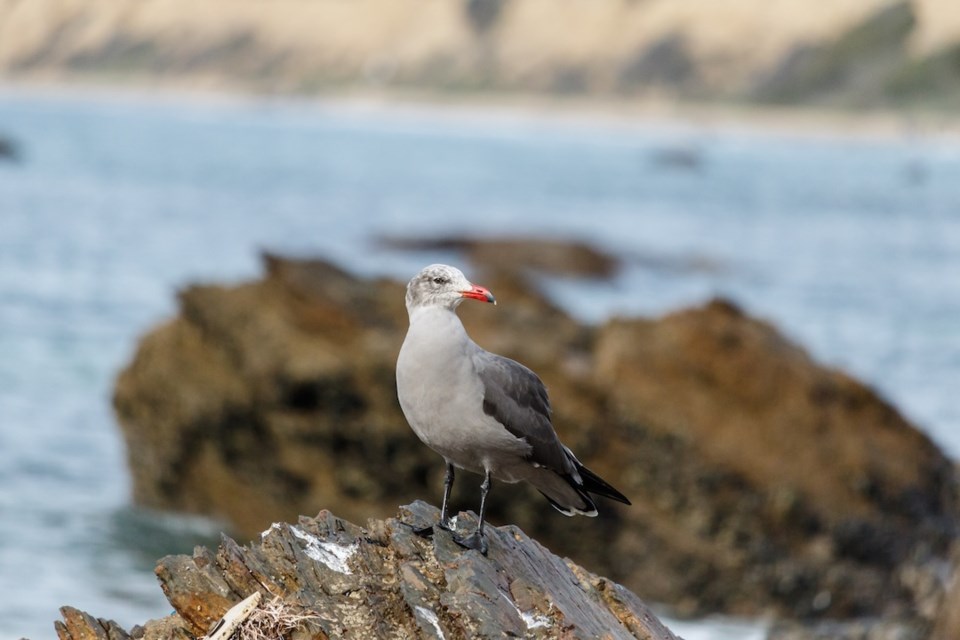Birders focus their attention on different habitats according to the season. During the springtime and early summer, the woods are alive with birdsong as many migrant species arrive from the south to breed. Conversely, during June, July and early August, saltwater habitats such as the Salish Sea are virtually devoid of birds. These birds that winter with us depart to breed on freshwater locations away from the coast, or further north along the coast in remote locations. During August, these species gradually begin to reappear, and birder’s attention follows.
On the mudflats at the head of Porpoise Bay, the first ducks are being recorded: American wigeon, pintail, green-winged teal and shoveler. Along with these are increasing numbers of gulls, with Bonaparte’s, short-billed and ring-billed all present. Birders will also be alert for possible rarities such as Franklin’s gull and even rarer species. An irregular visitor to the Sunshine Coast is Heermann’s gull, which is not recorded every year, but Mission Point is the most likely location. In past decades, August and September were the best months to observe flocks of common tern migrating southward, but this has become rarer in the 21st century. Parasitic jaegers attended the tern flocks, harassing them into disgorging food, but this species is now rarely recorded. The reason for the current absence of the tern flocks is unknown.
At this time of the year, birders are most alert for members of the shorebird family. There are 390 species worldwide, with 30 species recorded on the Sunshine Coast. As the name suggests, they are mainly located along shorelines. Most are highly migratory, with some making among the longest-known migrations in the world. The best locations for observing shorebirds are the Wilson Creek estuary, the Porpoise Bay mudflats, and Oyster Bay in Pender Harbour. Migratory species present in August are greater and lesser yellowlegs, numerous species of sandpiper, and long-billed dowitcher. Other species are rarely recorded, and there is always the possibility that a mega-rarity may appear and add a new species to the all-time Sunshine Coast checklist.
As we approach mid-August, this is the last opportunity to see or hear some species this year. Almost all violet-green swallows have already left. This species is one of the first species to arrive (often the second week in March), and the first to leave in the fall. Barn swallows and purple martins may linger with us into September. Nighthawks may still be seen and heard in the pre-dusk hours but will soon depart. Rufous hummingbirds are largely absent after Aug. 20, though a few may linger. Western tanagers are still abundant, with their pit-er-ik calls commonly heard in treed areas.
The year is winding down, but we prepare for the arrival of our winter birds, as the birds of summer return to their homes in the south.
To report your sightings or questions contact me at [email protected] or 604-885-5539. Good Birding.



